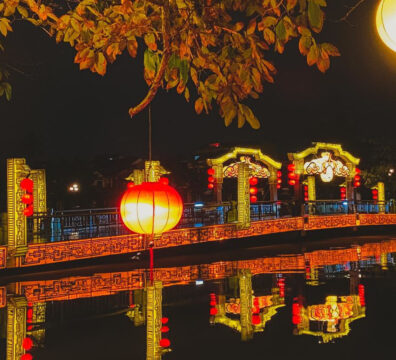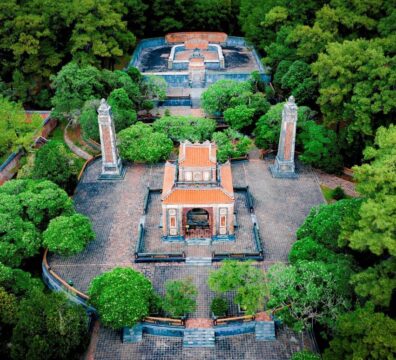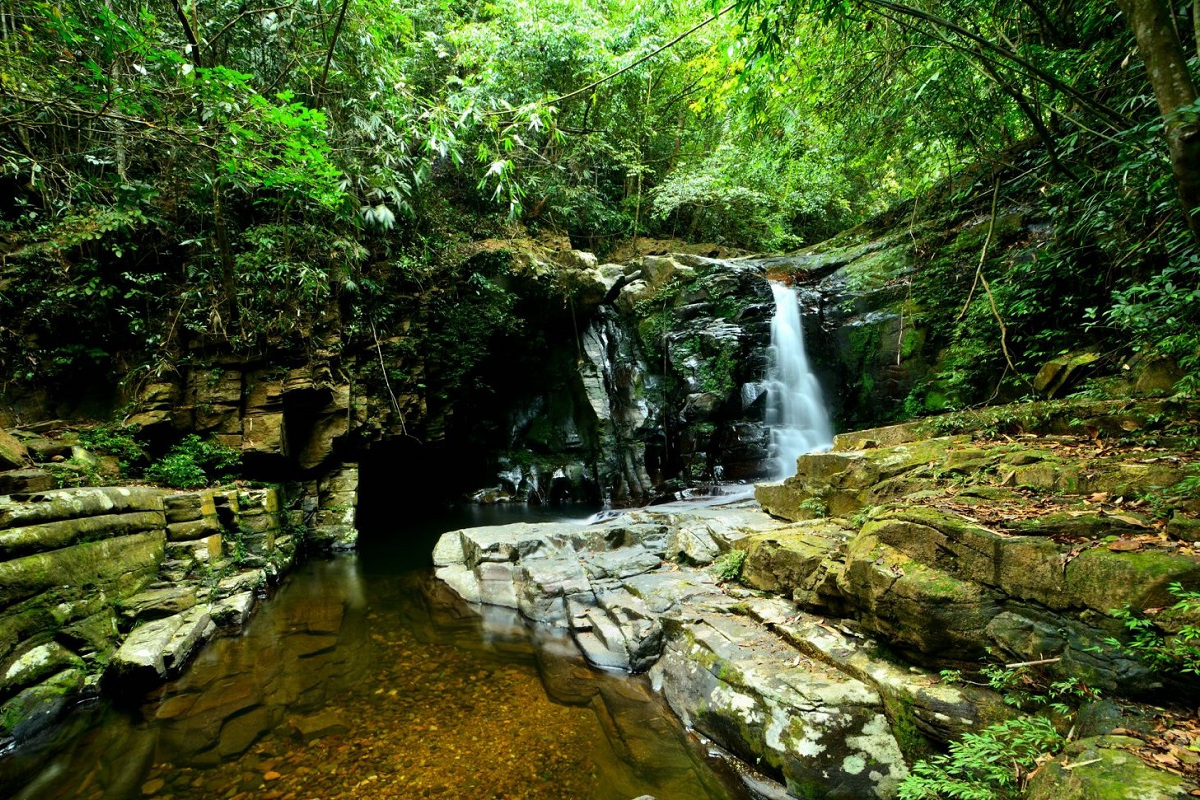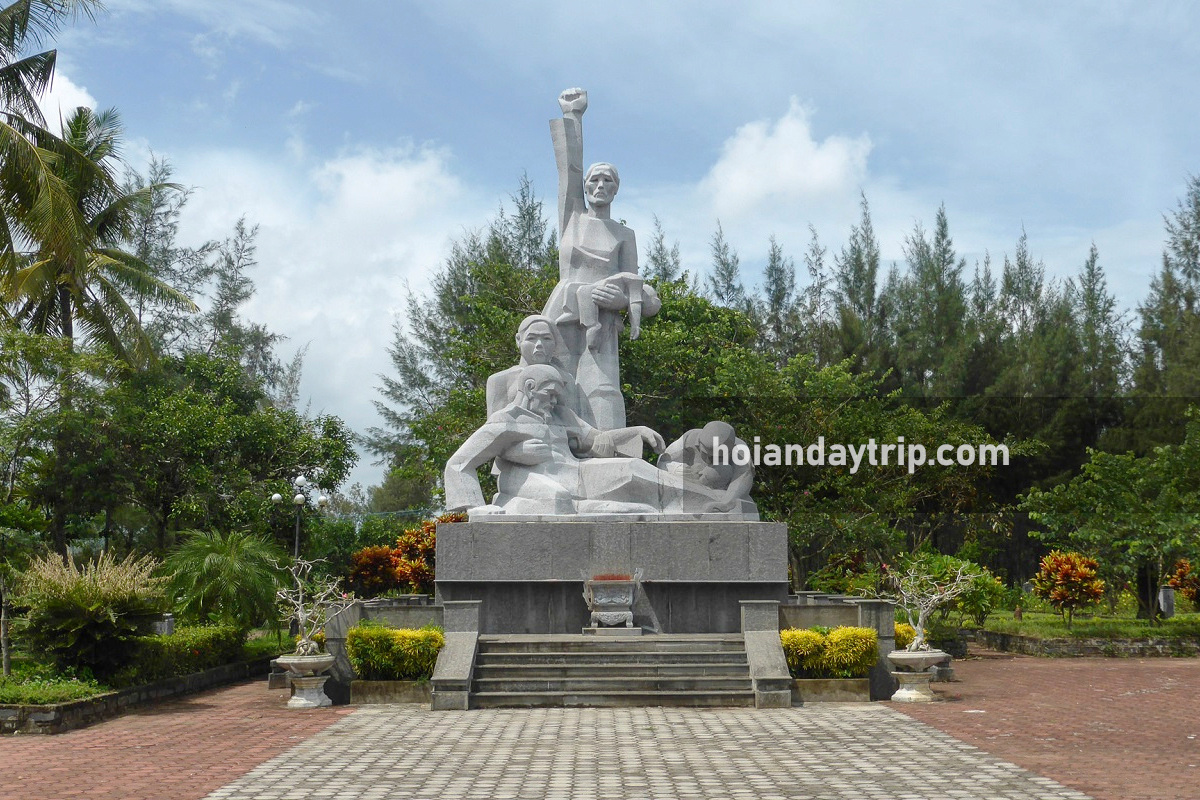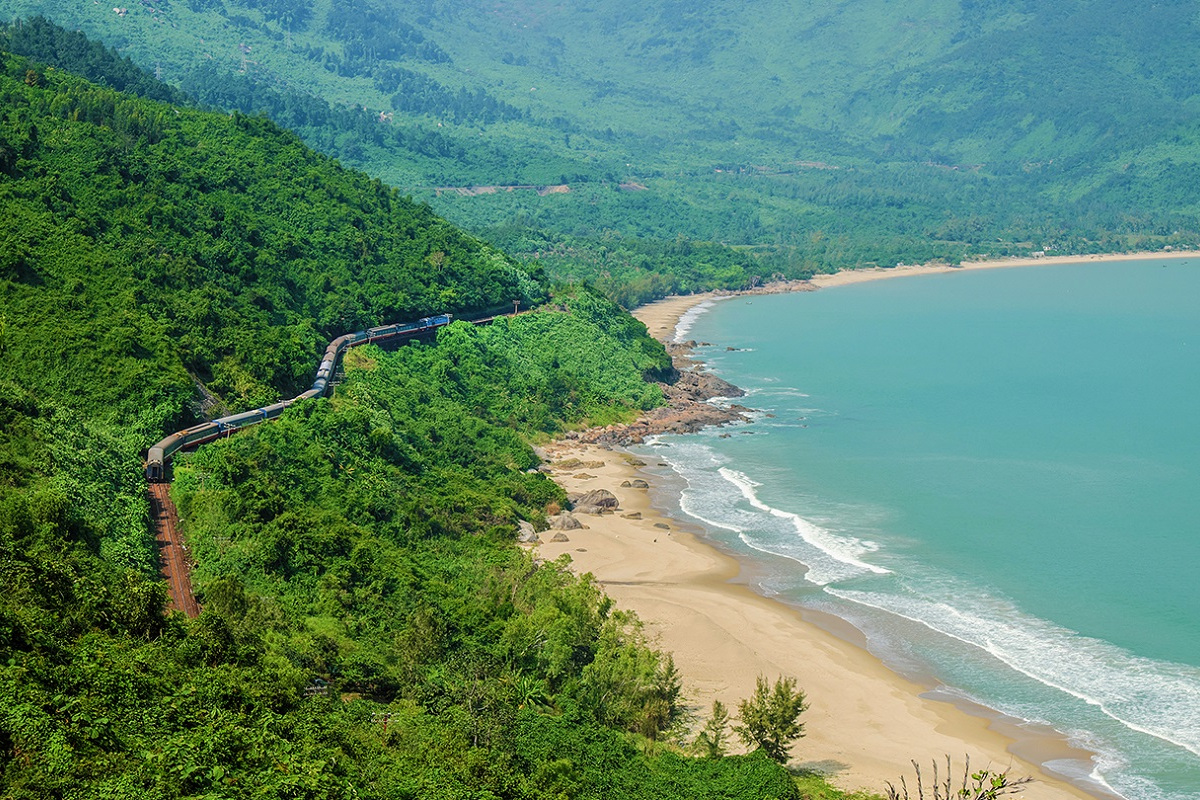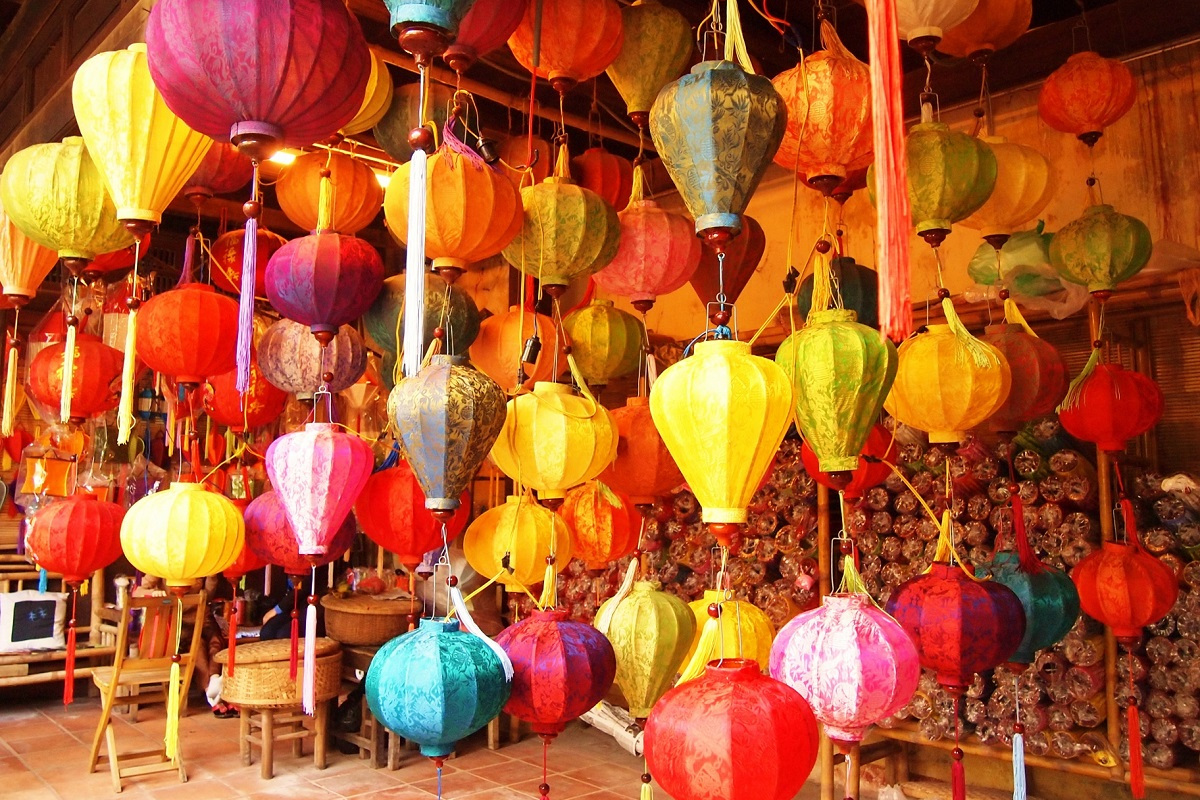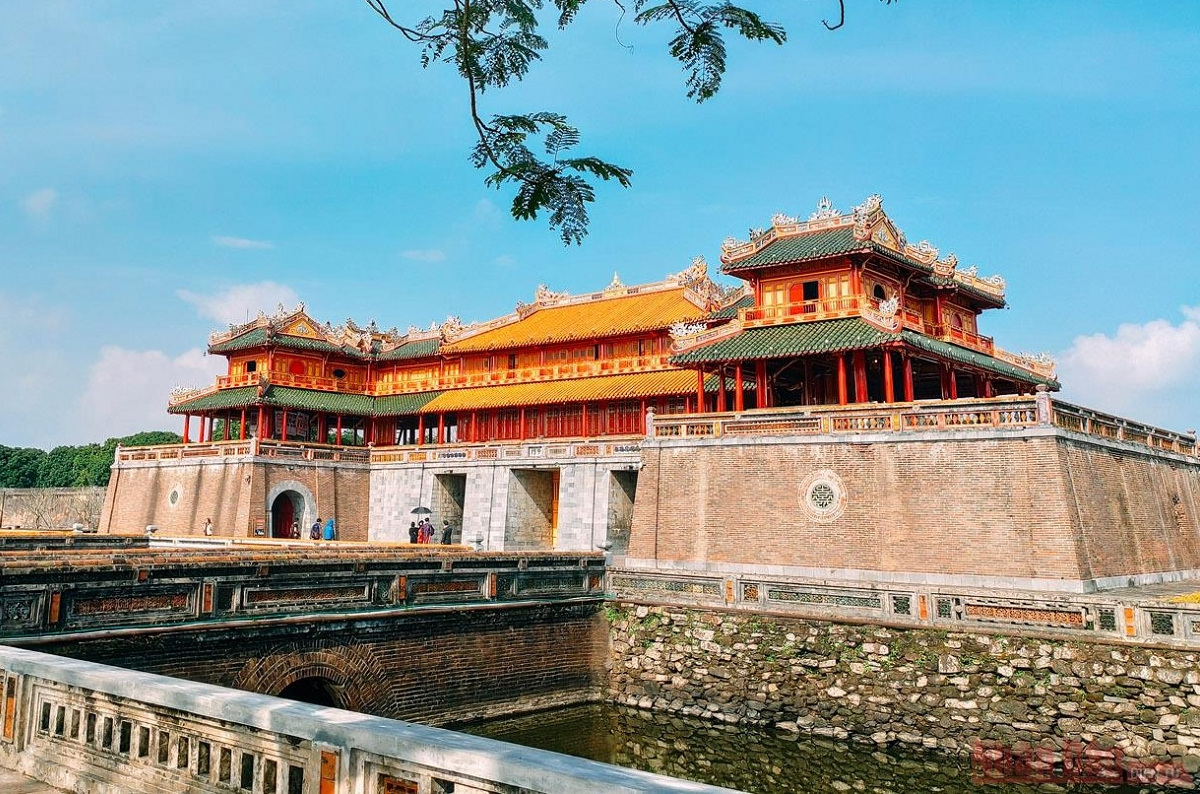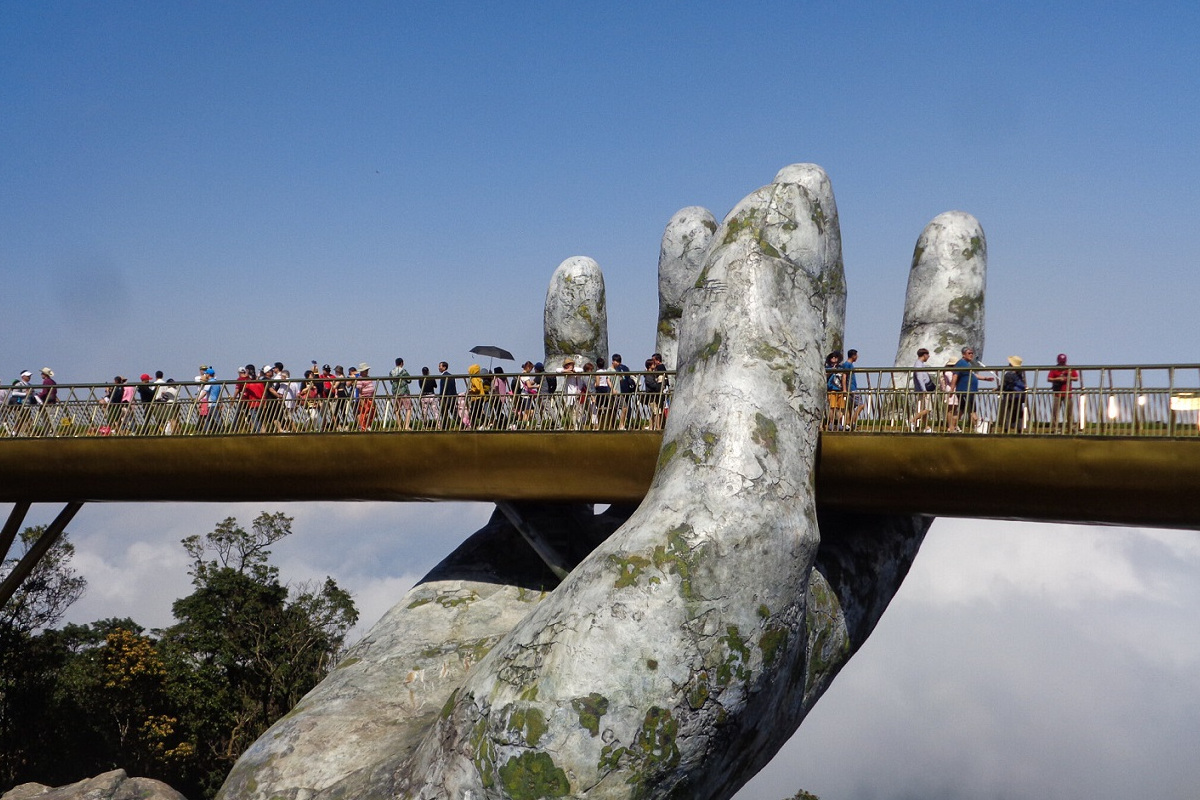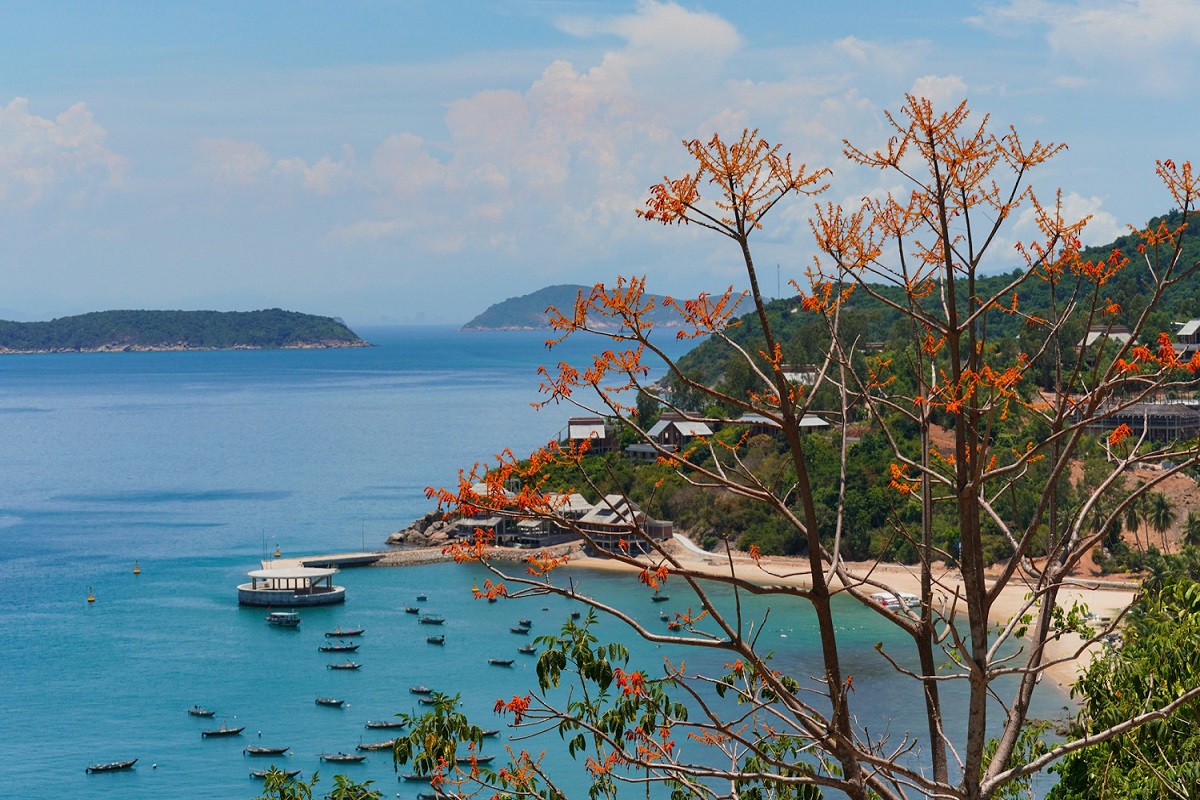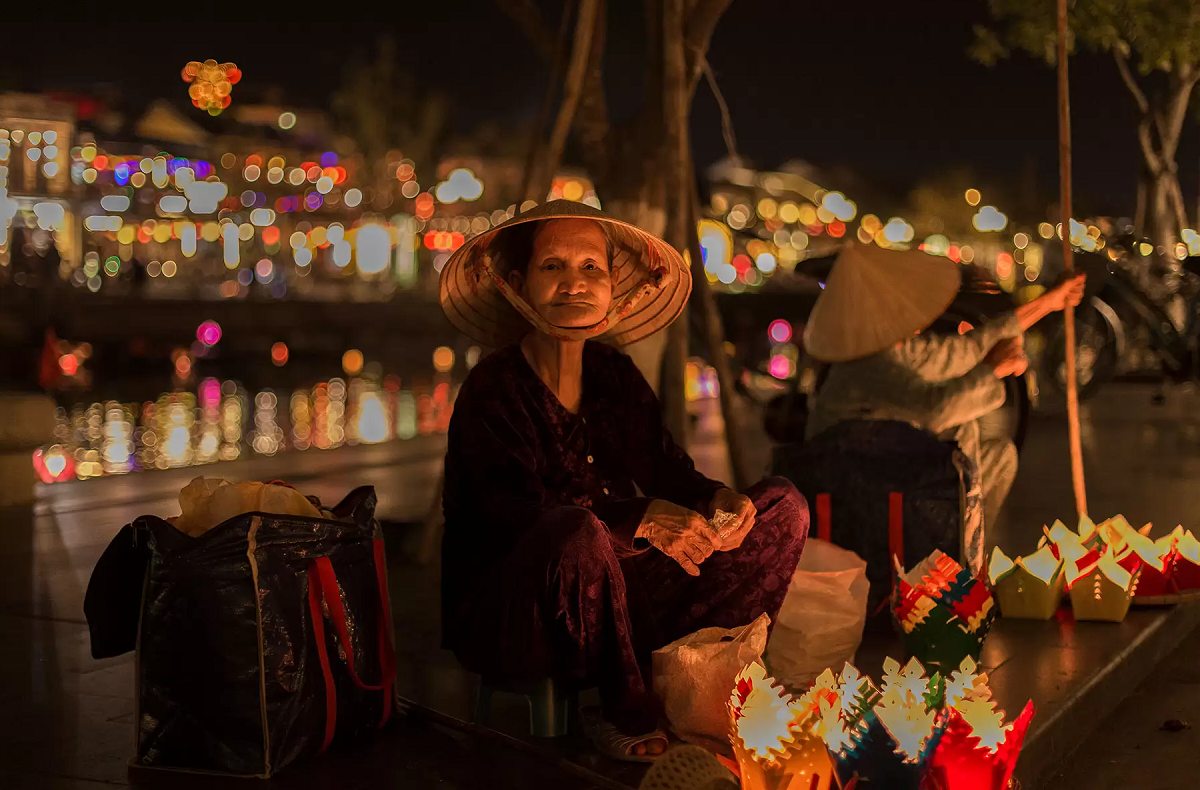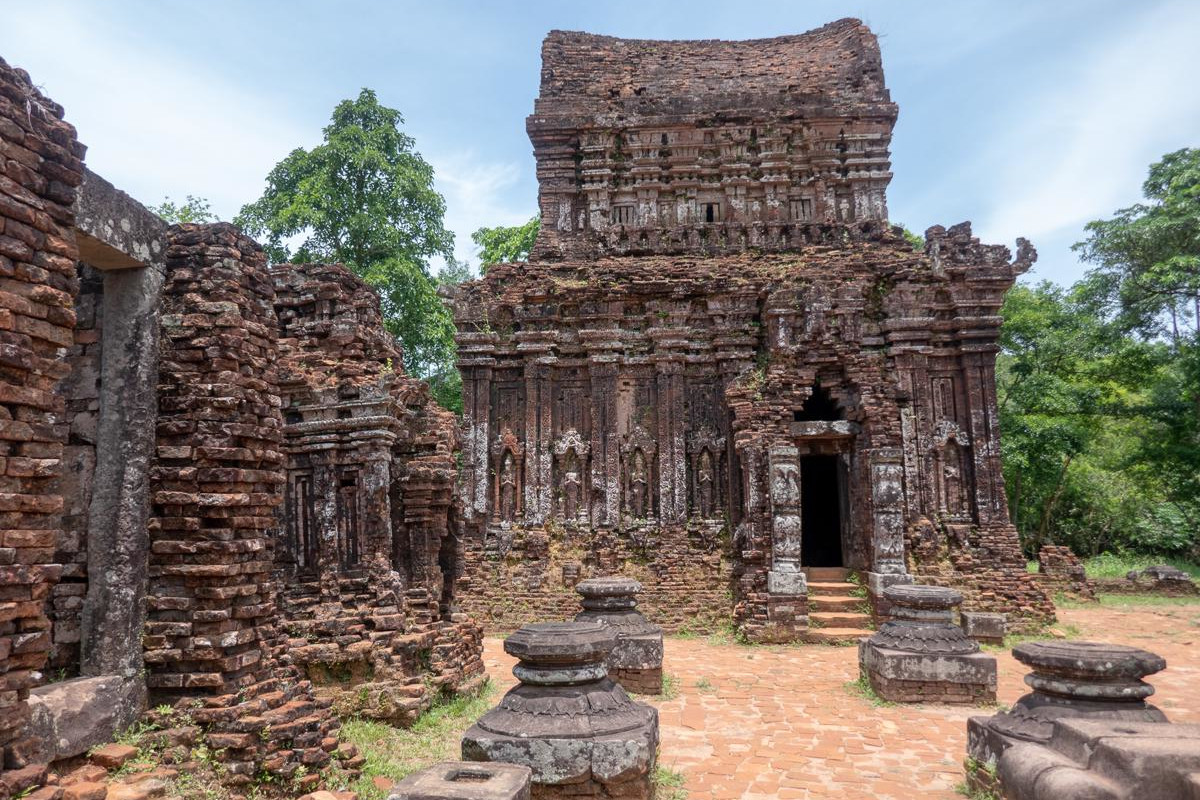Tomb of Tu Duc emperor is one of three most visited royal mausoleums in Hue. Two others are Minh Mang tomb – the tomb of Tu Duc king’s grandfather and Khai Dinh tomb. Compared to them, it’s closest to the city centre and of course, it has many differences and uniquenesses. Besides the Imperial city (a must see), travelers can design a “tomb tour” to it and others in one day or half of day, depending on their interests. Each mausoleum speaks its owner’s personalities, likings and worldview.
Totally, it’s really worth a visit to Tu Duc tomb, especially for those who are interested in history and Vietnamese traditional architecture and landscape. The tomb itself is the final home for a king whose life and reign have many ups and downs. He has more than 100 wifes but is childless due to smallpox since his birth. In this period, Vietnam faced the conquest of European colonists and missionaries. By his treaties with the French, it turns into a new era in which French people half-control the central government, and later the country becomes a colony.
This article aims to provide all visitors need to know about Tu Duc tomb in Hue. Don’t forget to check out other places to sightsee in its surroundings, they’re also interesting. We mention them below.
Read also:
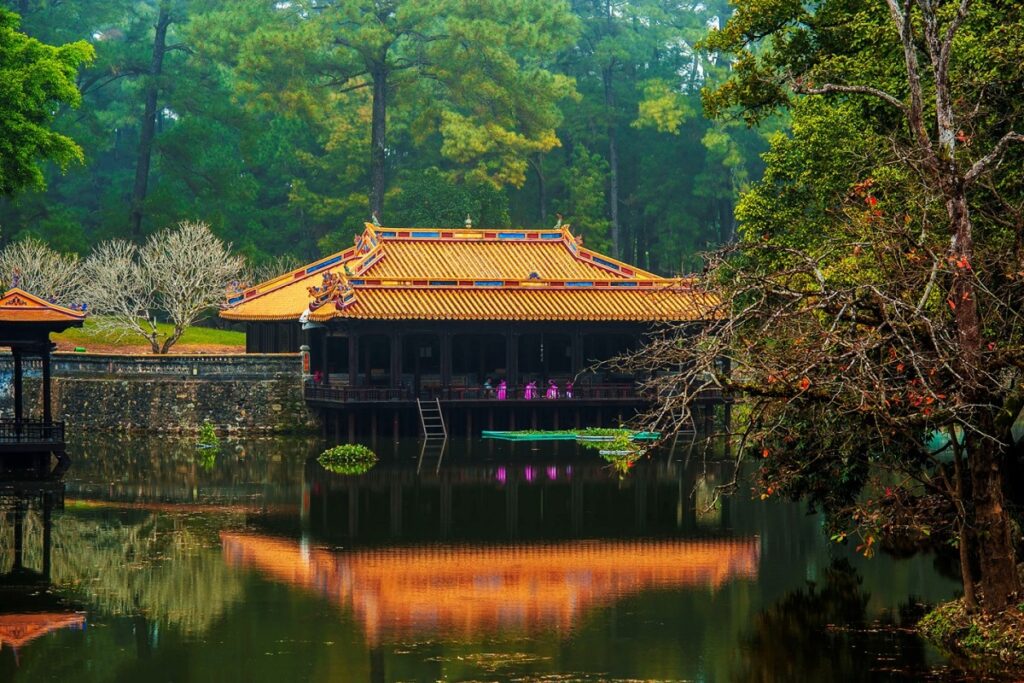
Table of content
- 1 A General View about Tu Duc Tomb
- 2 History of Tu Duc Emperor Tomb
- 3 About Tu Duc King (the 4th King of Nguyen Dynasty)
- 4 Opening Hours of Tu Duc Tomb
- 5 Tomb of Tu Duc Ticket and Prices
- 6 Tu Duc Tomb Dress Code
- 7 What to See in the Tomb of Tu Duc Emperor?
- 8 Location of Tu Duc Tomb and How to Get There
- 9 In the Surroundings of Tu Duc Tomb
- 10 Hue Day Trip from Da Nang or Hoi An
- 11 Tu Duc Tomb on Google Maps
- 12 Related Posts
- 13 Thieu Tri Tomb: The Peaceful Royal Tomb of Hue
- 14 Bach Ma National Park: Hiking, Trekking in Da Nang and Hoi An
- 15 Hue to Da Nang By Train: The Best Train Ride in Vietnam
- 16 Hue Royal Tombs: A Complete Guide and What is Best?
- 17 The Hue Abandoned Water Park (Thuy Tien Lake Waterpark)
- 18 Minh Mang Tomb Complete Visitor Guide
- 19 Tu Duc Tomb Complete Visitor Guide
- 20 Hoi An or Hue: Which is Better?
- 21 Lang Co Vietnam Travel Guide
- 22 Thien Mu Pagoda: Guide to Hue’s Most Famous Buddhist Temple
- 23 Perfume River Cruise: Guide to Best Boat Tour in Hue Vietnam
- 24 Tomb of Khai Dinh: The Most Unique Royal Tomb of Hue
- 25 Hai Van Pass Da Nang: Map, Route, Weather, History, Tour
- 26 Hue Imperial City and Forbidden City
- 27 Featured Tours and Experiences
- 27.0.1 Bach Ma National Park Tour from Hue
- 27.0.2 Bach Ma National Park Tour from Da Nang/Hoi An
- 27.0.3 Hoi An Sunrise Fish Market Tour
- 27.0.4 My Lai Massacre Tour
- 27.0.5 Golden Bridge/Ba Na Hills & Hoi An Tour
- 27.0.6 Hoi An Instagram Tour
- 27.0.7 Ky Anh Tunnel & Tam Thanh Mural Village Tour
- 27.0.8 Da Nang to Hue Motorbike Tour with Hai Van Pass & Easy Rider (1 Way)
- 27.0.9 Hue to Da Nang Motorbike Tour with Hai Van Pass & Easy Ride (1 Way)
- 27.0.10 Hue to Hoi An Motorbike Tour with Hai Van Pass & Easy Rider (1 Way)
- 27.0.11 Hoi An to Hue Motorbike Tour with Hai Van Pass & Easy Rider (1 Way)
- 27.0.12 Tra Que Vegetable Village Tour with Cooking Class
- 27.0.13 Ba Na Hills Half Day Tour from Hoi An
- 27.0.14 Marble Mountain & Hoi An Day Tour from Da Nang Port
- 27.0.15 Hue Day Tour from Chan May Port with Lunch
- 27.0.16 Marble Mountain & Hoi An Tour from Chan May Port
- 27.0.17 Ba Na Hills/Golden Bridge Tour from Da Nang Port
- 27.0.18 Ba Na Hills/Golden Bridge Tour from Chan May Port
- 27.0.19 Golden Bridge Private Tour with Ba Na Hills & Lunch
- 27.0.20 Ba Na Hills Afternoon Tour with Golden Hands Bridge
- 27.0.21 Ba Na Hills Private Tour with Golden Hands Bridge
- 27.0.22 Ba Na Hills Half Day Tour with Golden Bridge
- 27.0.23 Ba Na Hills Early Morning Tour to Beat the Crowds
- 27.0.24 Golden Bridge and Ba Na Hills Night Tour
- 27.0.25 Golden Hands Bridge Tour In Sunrise or Sunset (1/2 Day)
- 27.0.26 Cam Kim Island Bicycle Tour From Hoi An
- 27.0.27 Cham Island Tour From Hoi An (Group Tour)
- 27.0.28 Cham Island Tour From Da Nang (Group Tour)
- 27.0.29 Hoi An Vegetarian Food Tour
- 27.0.30 Hoi An Evening Walking Food Tour with Local Foodie
- 27.0.31 Private Hoi An Basket Boat Tour (Shuttle Bus, Bicycle, Bike)
- 27.0.32 Half-day Am Phu Cave Tour (Private)
- 27.0.33 Hoi An Countryside Tour by Electric Car or Bike
- 27.0.34 Da Nang Tour Package From Singapore
- 27.0.35 Hoi An Evening Tour From Da Nang with Lantern Boat Ride
- 27.0.36 Hoi An Walking Food Tour Through Laneways
- 27.0.37 My Son Sanctuary and Hoi An Old Town Tour
- 27.0.38 My Son Day Trip From Hoi An including Marble Mountains and Basket Boat
- 27.0.39 Half Day Hoi An City Tour With River Cruise
- 27.0.40 Son Tra Peninsula Tour with Marble Mountains (Private/Small Group)
A General View about Tu Duc Tomb
Tu Duc Tomb (or Tomb of Tu Duc, Tomb of Tu Duc emperor, Khiem Lang, Lang vua Tu Duc) is a well-known royal tomb and tourist attraction in Hue city. It’s constructed from 1864 to 1867, to worship and bury Tu Duc king (and later his first wife and one of his adopted sons). He ruled Vietnam for nearly 36 years, from 1847 to 1883, making his reign longest ever in the Nguyen dynasty. Tu Duc is the 4th emperor, with the predecessor – Thieu Tri, his father and the successor – Duc Duc, his oldest adopted son.
Many people visit Tu Duc tomb because it has a harmonious beauty between man-made buildings and the landscape. The king himself, his life, his family and what happened in his time are also very interesting to learn about. In 1993, this imperial burial place was inscribed to be a Unesco world heritage site, as a part of the Complex of Hue monuments. While wandering around it, there are a lot of photo opportunities and spots to take a rest with a good view.

History of Tu Duc Emperor Tomb
Choosing Location
After his coronation, Tu Duc immediately requests to discover a good piece of land to bury himself. It must be somewhere around mountains and hills in the upstream of the Perfume river, just like his father and grandfather. This area is to the west of Hue royal palace (city), representing the world of death in Vietnamese traditional philosophy. Finally, the Geography ministry finds a location that perfectly matches a set of rules required for the imperial tomb and fengshui principles. Tu Duc’s mausoleum is protected by a small hill with a peaceful waterway in the front, and sits on a gentle mountain (meaning resting on the throne).
Protest of the Workers
In the beginning, Tu Duc emperor designs and names his final house “Van Nien Co”, meaning the building that survives for thousands of years. He originally plans to complete the construction in 4 years, but later changes his mind to rush and shorten it in 6 months. Due to poor living and working conditions, the workers and builders protest. They use the pestles (for crushing the lime) and that’s why their struggling activity is mentioned “the Lime Pestle struggle“ in history books. They come to the Imperial city but then controlled by imperial soldiers. Doan Huu Trung, one of the leaders, is killed when he is at the age of 22 (with his brothers). Additionally, this protest aims to make a coup in order to dethrone and replace reigning Tu Duc by his older brother – Nguyen Phuc Hong Bao (read his life below to know more about their relationship).
Following the protest of workers, Tu Duc king changed the name of his tomb to Khiem Lang, meaning “the Modesty tomb” to express his modesty and sincerity. And, the name of every building of the tomb later starts with “Khiem” word.
Tomb as a Palace
In 1867, the tomb was completed. Unlike other kings of the Nguyen dynasty, Tu Duc was still alive at that time, so it’s not used yet for burial. When he likes to escape from the boring Imperial city, he visits this tranquil place, relaxes and immerses himself in beautiful nature. It functions as a mountain resort, so called “Khiem Cung” (the Modesty palace). Officials and servants must follow him too.
As an artist, in this poetic and romantic site, Tu Duc also focuses on composing poems, literature, songs, painting, and other forms of art. His number of works of art is up to 4,000, more than any other emperors in his house. Finally in 1883, the palace returned to its original function – a burial place when the king passed away. Totally, he stayed in his “tomb” for 16 years. The wifes and former servants must live here to continue ceremonies and show their loyalty. On 16th day of 6th lunar month – Tu Duc’s date of death, the royal family will pay homage.
About Tu Duc King (the 4th King of Nguyen Dynasty)
Before Coronation: Nguyen Phuc Hong Nham Prince
Nguyen Phuc Hong Nham is a prince, the son of Thieu Tri king who ruled Vietnam from 1841 to 1847. This emperor has 64 childs, including 29 boys and 35 girls, and Hong Nham is the second. He is borned in 1829 and lived to 53 years old. His mother is Tu Du queen, the daughter of a high-ranking official – Pham Dang Hung.
Hong Nham has one older brother, and his name is Nguyen Phuc Hong Bao (1825-1854). According to traditions, this man (the oldest prince) will be crowned and continue his father’s reign. However, Thieu Tri king – their father keeps the choice of the successor until breathes his last. Finally, Hong Nham is selected instead of Hong Bao because he is more hard-working in education, has better behavior and attitude. On the other hand, for his dad, Hong Bao is just giddy, lazy in studying, so doesn’t deserve to succeed to the throne. When the officials announce this decision (1847), Hong Bao can’t stay strong, gets very angry and even vomits the blood from his mouth. Someone else assists him to finish the coronation ceremony for his younger brother.
Over the years, Hong Bao tries to steal Hong Nham’s throne two times but all are unsuccessful. The first time, 1851, he collaborated with Catholic missionaries and promised to support them in introducing the religion. In the second time, he finds the supporters from Thai and Cambodian kingdoms, but due to leaked information, he is caught. He will be killed but his brother-king Hong Nham pardons him and then he dies in the prison. In 1866, his son joined a struggle to dethrone Tu Duc also.
During Tu Duc King’s Reign
Nguyen Phuc Hong Nham is the 4th king of the Nguyen dynasty under the name “Tu Duc”. He sat on the throne for 36 years (1847 to 1883), longer than any other emperor of the house. In his reign, Vietnam faced many difficulties, especially the conquest of Europeans. These are some highlights:
– There are two treaties signed between Tu Duc’s government and the French people, particularly in 1862 and 1874, showing his concessions. According to the first – Treaty of Saigon, he cedes three Southeastern provinces and islands of Con Dao (Poulo Condor) to the French. The places became the earliest “colonies” in Vietnam. Three provinces in the Mekong delta which were occupied by French people previously, now are ceded after the second treaty – Treaty of Saigon (again). The French Cochinchina colony is established, corporating all provinces. Additionally, some trading ports also have to be opened to international trade. Thus, two treaties make a turning point in Vietnam history, and pave the way for French colonization.
– Tu Duc forbids Catholicism in his country since he is crowned and this persecution leads to death of many missionaries, converts, and destruction of churches.
Three Adopted Sons of Tu Duc King
Due to smallpox, Tu Duc king has no children, so he adopts two boys from his younger brother’s families and one younger brother, to educate and take over the throne. They are Nguyen Phuc Ung Chan (later Duc Duc king), Nguyen Phuc Ung Duong (later Dong Khanh king) and Nguyen Phuc Hong Dat (later Hiep Hoa). Here is brief information:
– Duc Duc king: borned on 23rd February 1852 in family of Nguyen Phuc Hong Y – 3rd son of Thieu Tri king, the 5th king of Nguyen dynasty (right after Tu Duc) but for 3 days – the shortest
– Dong Khanh king: borned on 19th February 1864 in family of Nguyen Phuc Hong Cai – 26th son of Thieu Tri king, the 6th king of Nguyen dynasty (right after Duc Duc) but for 4 months
– Hiep Hoa king: borned on 1st November 1847, 29th son of Thieu Tri king (the youngest son), the 9th king of Nguyen dynasty for nearly 3,5 years
Opening Hours of Tu Duc Tomb
Tomb of Tu Duc emperor opens from 7 am to 5:30 pm every day. Tickets are sold within this period too, meaning that the last tickets are available by 5:30 pm. In the afternoon, visitors should come here earlier than 4:30 pm to have enough time for sightseeing. We recommend staying in the tomb from 1,5 to 2 hours to leisurely walk around it, photograph, learn about history and have a break when needed.
Tour guide service is available in Tu Duc tomb, costing 100,000 VND. English and Vietnamese are popular, and it’s needed to contact and book in advance if visitors require other languages. We can help to arrange a guide for your group, please text us in whatsapp +84968009827.
Tomb of Tu Duc Ticket and Prices
For adults and children above 12 years old, the entrance fee of Tu Duc tomb is 150,000 VND. Children from 7 to 12 years old will be charged 30,000 VND and it’s free for smaller kids. These prices have no difference between local and international visitors. In some special days for Hue city or the country, Tu Duc tomb opens for free for Vietnamese people (foreigners still pay).
Combo tickets are good options to save if visitors like to visit Tu Duc tomb and other sites in the Complex of Hue monuments. For 3-sights combo that includes the Imperial city, Tu Duc tomb and Minh Mang tomb, the price is 420,000 VND (adults) and 80,000 VND (children from 7 to 12 years old). 4-sights combo will cover the Imperial city, Tu Duc tomb, Minh Mang tomb and Khai Dinh tomb. Its cost is 530,000 VND for adults and 100,000 VND for children from 7 to 12 years old. The validity is two continous days.
Besides on the site, visitors can buy tickets of Tu Duc tomb online on the official webpage of Hue Monuments Conservation Center.
Tu Duc Tomb Dress Code
Like the rest of the Complex of Hue monuments, visitors are required to wear respectively to visit Tu Duc tomb. Their clothings needs to cover the armpits, navel and knees. Traditional costumes of Vietnamese and local people are highly recommended for both men and women. It also means that too short pants and shirts (such as crop top, bikini) are not allowed.
Prior to leaving the hotel, please remember to bring sun cream, sunglasses and hat/cap/umbrella to protect from the sun, bottles of water, camera or phone, good and comfortable shoes. In the rainy season, necessary items are rain poncho or umbrella, and waterproof shoes.
What to See in the Tomb of Tu Duc Emperor?
Hoa Khiem Temple and Luong Khiem Temple
Tu Duc mausoleum has a complex of buildings for worshipping with two temples inside. To get there, from the ticket check point, visitors need to walk along the lakeshore, passing by the Temple of Mountain God, and then go up the stairs to the left.
Behind the main entrance (Khiem Cung Mon), the first temple is Hoa Khiem temple. It’s completed in 1867 but firstly used as a palace where Tu Duc king makes meetings with the officials when he stays in the “tomb”. After his death, it’s converted into a worshipping building like what it’s originally designed for. Its interior expresses the modesty concept through simple black wooden columns and furniture and minimum colorful decorations. French influences are seen in glass windows, glass paintings, lamps and more, telling visitors that at the time, Vietnam was half-colonized by French.
Connected with Hoa Khiem temple is a theatre (named Minh Khiem Duong), used to entertain the king with imperial performances and a house to store necessities. A fake throne is in the theatre, allowing visitors to sit on and make fun photos. Traditional and royal costumes for rental are available (compared to the Imperial city, it’s less crowded here).
Another temple is Luong Khiem temple that just stands behind the Hoa Khiem palace. Tu Duc king stayed here before he came to the next world in 1883. Then, this building has been used to worship his mother – Tu Du empress who lived from 1810 to 1901. A gynaecology and obstetrics hospital is named after her in Ho Chi Minh city because she has unconditional and endless love for her son. The temple was recently restored, so it looks brand new.
Note: Visitors can walk in the palaces by shoes, but have to remove hat, sun glasses, and no photo is allowed.
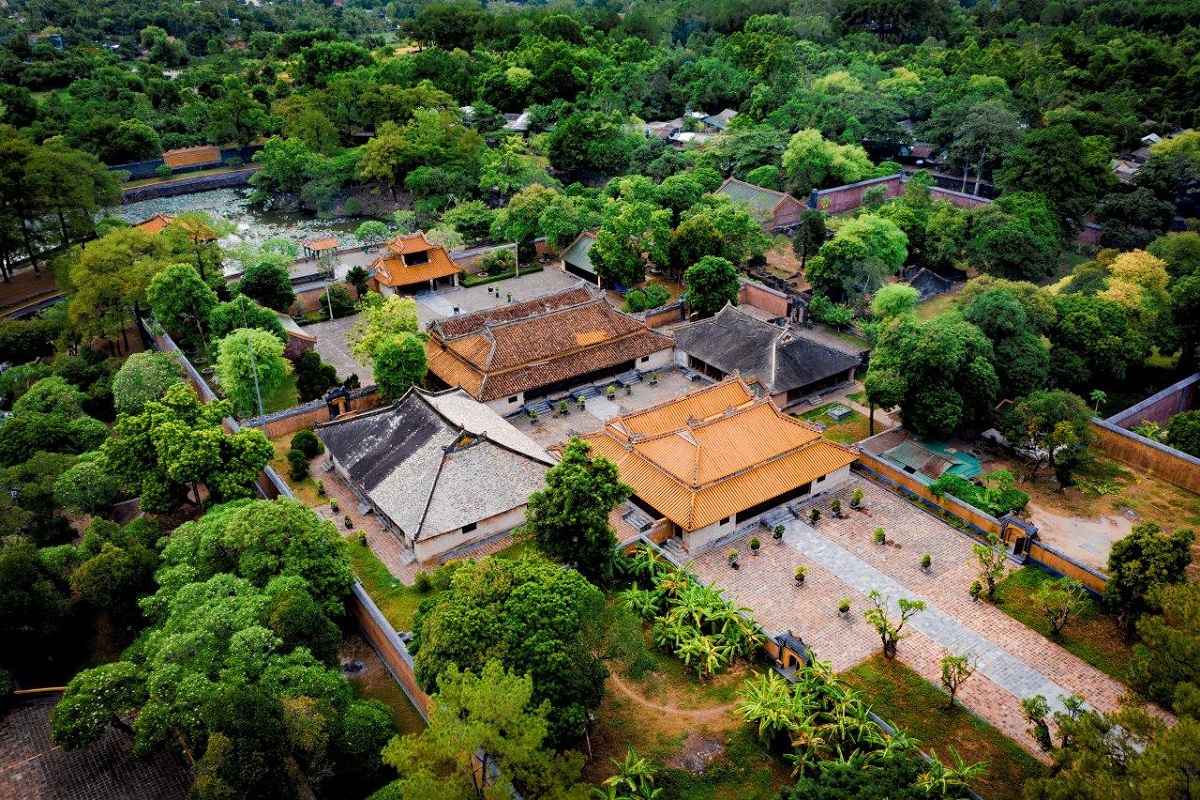
Du Khiem Ta
This yellow tiled-roof building is placed on the shoreline of Luu Khiem lake – the key body of water in Tu Duc king’s tomb. It’s used for relaxation activities, such as reading books, composing poems, going fishing or feeding the fish, listening to music, etc. Now, it’s a perfect place for tourists to cool off and avoid the heat. In the summer, Luu Khiem lake is filled by lotus, and in its middle, there is an island where animals are raised. During the day, Ca Hue – the traditional singing of Hue people will be performed here a few times. Check out the reschedule on the site.
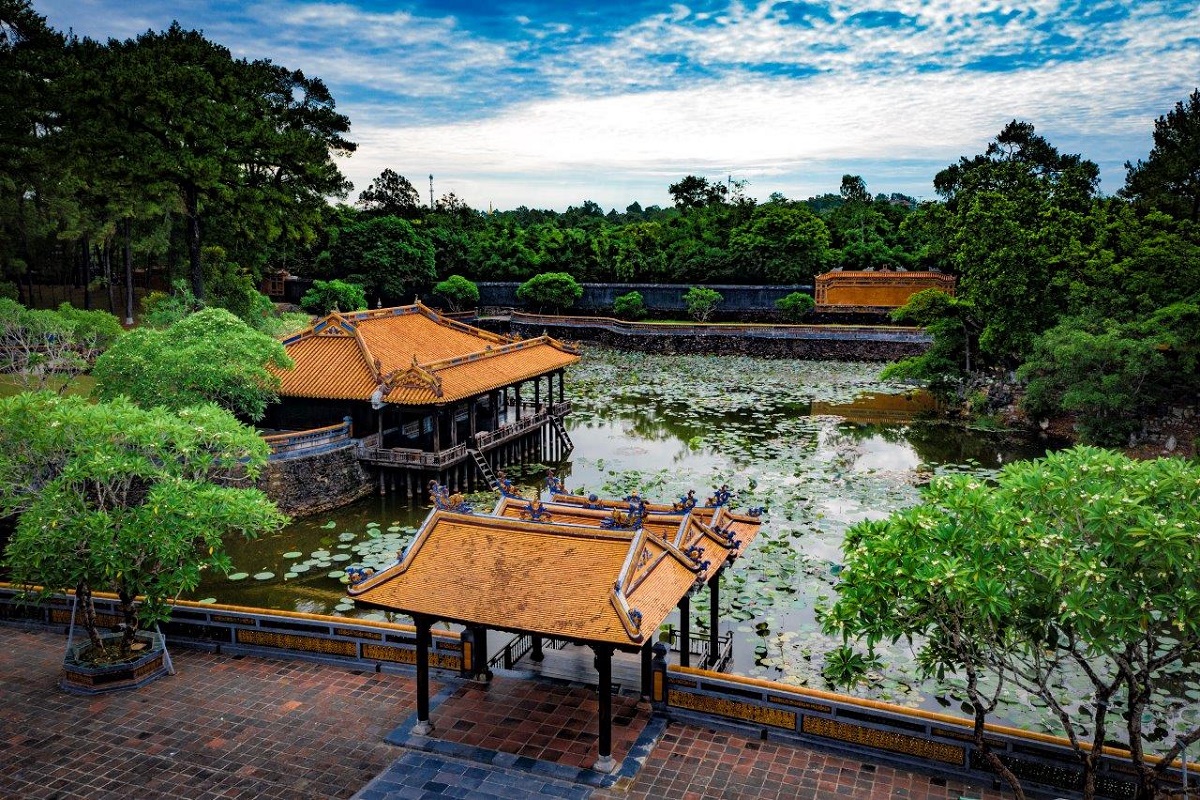
The Tu Duc Tomb
The tomb of Tu Duc king is next to the temple zone. Visitors just need to walk along the lakeshore again to visit it. The path is lined by many jackfruit and longan trees that provide shade and sweet fruits for ceremonies. Champa flowers (white petals, yellow pistils) are also popularly planted around this area.
To the left, walking upstairs, visitors will come to the Mandarin yard where two rows of stone officials, elephant and horse are set. They work and serve for the king when he is still living, so will follow him to the next world too. In the ceremonies, working officials stand here to honour the dead emperor.
In the higher terrace, there is the Stele house. It protects Khiem Cung Ky – the largest memorial stele in Vietnam and a national treasure (recognized in 2015). This 4m-tall piece of stone has two faces with nearly 5,000 Mandarin Chinese letters, and it weighs up to 20 tonnes. Definitely, it’s the biggest of the type in Vietnam. Its uniqueness is the entire content composed by Tu Duc himself because he has no son. Traditionally, the son will write it to honour his dead king-father. Instead of praising himself and his reigning time, this artist-emperor chooses to tell his life stories and why he rests in the place.
To go to the tomb, visitors will walk around a small pond, and then upstairs again. Behind the screen that is decorated by dragons, is the tomb of Tu Duc king. Sitting on a place that is a little bit higher than surrounding, it’s paved with the finest stone of the time. Its style (design) is simple and its decoration is minimized to express the modesty of the king. Locals say that Tu Duc’s real body is not here but somewhere else inside the tomb’s protected wall. Of course, the correct place is unknown (if a person knows, he or she will be killed to keep the secret!).

Tomb of Le Thien Anh Queen
From the Stele house, there is a paved walking path to go to Le Thien Anh queen’s tomb. She is the first wife of Tu Duc king, lived between 1828 and 1902 (74 years old). Her father is Vo Xuan Cam, a high-ranking official who works for 4 kings and retires in Tu Duc’s reign.
The tomb is not big, simple but features beautifully-made phoenixes for decoration. In the history, Le Thien Anh is one of a few queens (women) buried in the same royal tomb with the king.
Temple and Tomb of Kien Phuc King
Tu Duc mausoleum is known for “a king’s tomb in another king’s tomb” because it has the burial place of Tu Duc and Kien Phuc kings. On the opposite side of the stream, near the queen’s tomb, visitors will see the temple and the tomb of Kien Phuc emperor (generally called “Boi Lang” or the Additional tomb). Both were built in 1884, right after the sudden death of its owner. That’s why the government has to bury him in the ground of his adopted father’s tomb. He rules the country for around 8 months. Passed away at the age of 15, Kien Phuc has the shortest life of all kings in the Nguyen dynasty. There is no surprise that he had no wifes and children at the time.
Location of Tu Duc Tomb and How to Get There
Tu Duc Tomb’s Location
Tu Duc tomb is in Duong Xuan Thuong village, Thuy Xuan ward, 5 kilometers away from Hue city centre – Phu Xuan bridge. The distance to it is 6,5 kilometers from the Imperial city, 4,5 kilometers from Hue railway station and 17 kilometers from Phu Bai airport. It lies on Doan Nhu Hai street.
By Car and Taxi
It’s not too far to reach Tu Duc tomb from anywhere in Hue city center. So, car and taxi are popular vehicles for tourists, and their price has not a big difference. The cost ranges from 100,000 to 150,000 VND for one way, depending on the size of the car. Taxi companies may charge visitors when their driver waits at the tomb (about 50,000 VND each hour), in case that visitors like to go somewhere else after. Our advice is booking a private English-speaking driver who has been working for himself, it’s easier for everything. Text us in whatsapp number +84968009827 for more information and reserve.
Read also: Hue Private Car and Driver
By Motorbike and Bicycle
The drive to sights in Hue is not long, seriously. Therefore, riding to the tombs by motorbike is an easy and cheap way. It takes visitors only 20 minutes to get from the hotel in the city centre to Tu Duc tomb. From there, the tomb is accessible by two roads: Le Ngo Cat and Huyen Tran Cong Chua. In the case of the first road option, travelers need to come to Nam Giao altar and then follow Le Ngo Cat St (after the traffic light). This street is not small, steep and bumpy at sometimes. In the end, turn left and keep riding on the main asphalt road. People in the tomb will ask for their parking services (and souvenirs, beverages) and the fee is 5,000 to 10,000 VND.
If choose Huyen Tran Cong Chua to go, please find Bui Thi Xuan Rd first and then turn left at the crossroad near Phuong Duc church. Keep riding uphill and straight away until seeing colorful incense sticks shops and then the tomb. This route is quite small, so sometimes danderous when the trucks move. We advise paying attention while riding on it.
If like going to Tu Duc tomb by bicycle, please take note that it’s in the mountains. Visitors need to think about physical health and time they have, in order to make the visit easy. All roads leading to the tomb have some slopes (sometimes steep), so reading online reviews and experiences will be helpful.
In the Surroundings of Tu Duc Tomb
Thuy Xuan Incense Making Village
Along Doan Nhu Hai road to Tu Duc tomb, there are many shops and workshops where locals sell and make incense sticks. The name of the place is Thuy Xuan incense making village on the map. Tourists like to stop here for photos with a backdrop of colorful sticks and flowers. Artisans don’t mind showing and teaching the new guests how to make the sticks, with different fragrances. Another local product is Vietnamese traditional conical hats made by leaf.
Vong Canh Hill (aka the Bunker Hill)
Vong Canh hill is a place visitors should not miss. It’s a low pine-filled hill near Tu Duc tomb and Thuy Xuan incense village, and from there, the view is excellent. Visitors can catch a peaceful and unspoiled panoramic scenery including a long stretch of the Perfume river, gardens, hills and villages along its banks. Here, it’s possible to find the best spots to enjoy the river as well as the sunset on it. Of course, there are many photo opportunities. On the top of Vong Canh hill, there are a couple of bunkers built by French and reused by Americans in the Indochina wars.
Tomb of Dong Khanh Emperor
From Tu Duc tomb, keep following Doan Nhu Hai road, visitors will see the mausoleum of Dong Khan king. He is the 9th king of the Nguyen dynasty, who ruled Vietnam from 1885 to 1889. Like Duc Duc and Kien Phuc emperors, this man is adopted by Tu Duc and his wife. However, he is crowned latest although he is oldest among siblings. Khai Dinh – the 12nd king is his son, and is who embellishes the temple and the tomb to honour him. Read full details in https://centralvietnamguide/dong-khanh-tomb.
Hue Day Trip from Da Nang or Hoi An
From Da Nang or Hoi An, travellers can have a day trip to Hue, including Tu Duc tomb (or another tomb) and other highlights of the city. In the morning, the bus will pick up at the hotel, and then it will take nearly 3 hours to arrive in Hue. En route, Hai Van pass – Vietnam’s most beautiful coastal road and Lang Co lagoon are stopovers, to enjoy nature. Lunch is served with Vietnamese national foods and local dishes, after visiting the tomb. In the afternoon, the Imperial city – the seat of power during 143 years for the Nguyen family and Thien Mu pagoda – the oldest Buddhist temple. With a knowledgeable tour guide, day trippers will have many information about history, culture, architecture and more. Vietnamese and English speaking guides are available daily but for other foreign languages, please make a request in advance. You can read more details in our Hue day trip from Da Nang or Hoi An.
Tu Duc Tomb on Google Maps
Related Posts
Thieu Tri Tomb: The Peaceful Royal Tomb of Hue
Thieu Tri emperor tomb is an unpopular place to visit in Hue. From the city centre, it’s closer than Khai Dinh tomb, Minh Mang tomb and Gia Long tomb, and
Bach Ma National Park: Hiking, Trekking in Da Nang and Hoi An
Two best places for trekking and hiking in and near Da Nang are Son Tra mountain (peninsula) and Bach Ma national park. Which one is better is actually personal because these
Hue to Da Nang By Train: The Best Train Ride in Vietnam
Like Hanoi to Sapa, many travelers choose to get from Hue to Da Nang by train. Not just a cheap deal, the experience on this ride is definitely stunning and
Hue Royal Tombs: A Complete Guide and What is Best?
The Nguyen dynasty existed 143 years, from 1802 to 1945 with 13 emperors, but only 7 of them had their own mausoleum. On the map, all of these buildings are
The Hue Abandoned Water Park (Thuy Tien Lake Waterpark)
Recently, the Abandoned water park in Hue is known by travelers worldwide thanks to social media and online magazines, just like the Golden hands bridge in Da Nang. It was
Minh Mang Tomb Complete Visitor Guide
Minh Mang is the 2nd ruler of the Nguyen dynasty, the king of Vietnam from 1820 to 1840. His contributions to the country can’t be counted, including the largest territory Vietnamese
Tu Duc Tomb Complete Visitor Guide
Tomb of Tu Duc emperor is one of three most visited royal mausoleums in Hue. Two others are Minh Mang tomb – the tomb of Tu Duc king’s grandfather and
Hoi An or Hue: Which is Better?
Both Hoi An and Hue cities are in the middle of Vietnam, and they’re not far from each other (about 130 km). Therefore, for those who travel from north to
Lang Co Vietnam Travel Guide
Lang Co was a lovely backwater town nestled at the foot of spectacular Hai Van Pass for some decades. Not yet widely known because of the popularity of beaches in
Thien Mu Pagoda: Guide to Hue’s Most Famous Buddhist Temple
Thien Mu Pagoda is in the itinerary of any Hue city tours and day trips from Da Nang or Hoi An, because of its various interests. In short, it’s really
Perfume River Cruise: Guide to Best Boat Tour in Hue Vietnam
Perfume River cruise is a popular activity in Hue, Vietnam. Different from other sightseeing rides, this experience is by a dragon boat that was used only for the king formerly.
Tomb of Khai Dinh: The Most Unique Royal Tomb of Hue
Tomb of Khai Dinh is the last emperor mausoleum built in Hue and Vietnam. It’s famous for one-of-the-kind architecture and art that was never seen in the country at that
Hai Van Pass Da Nang: Map, Route, Weather, History, Tour
Truong Son or Annamite Range is the most dramatic mountain ridge in Vietnam. When it juts out into the sea, spectacular Hai Van Pass is formed. This amazing sculpture of
Hue Imperial City and Forbidden City
Located by the Perfume River, Hue Imperial City and Forbidden City are the 2nd and 3rd walls of the Citadel, seat of Vietnamese power from 1802 to 1945. These are home of luxury-decorated palaces,

